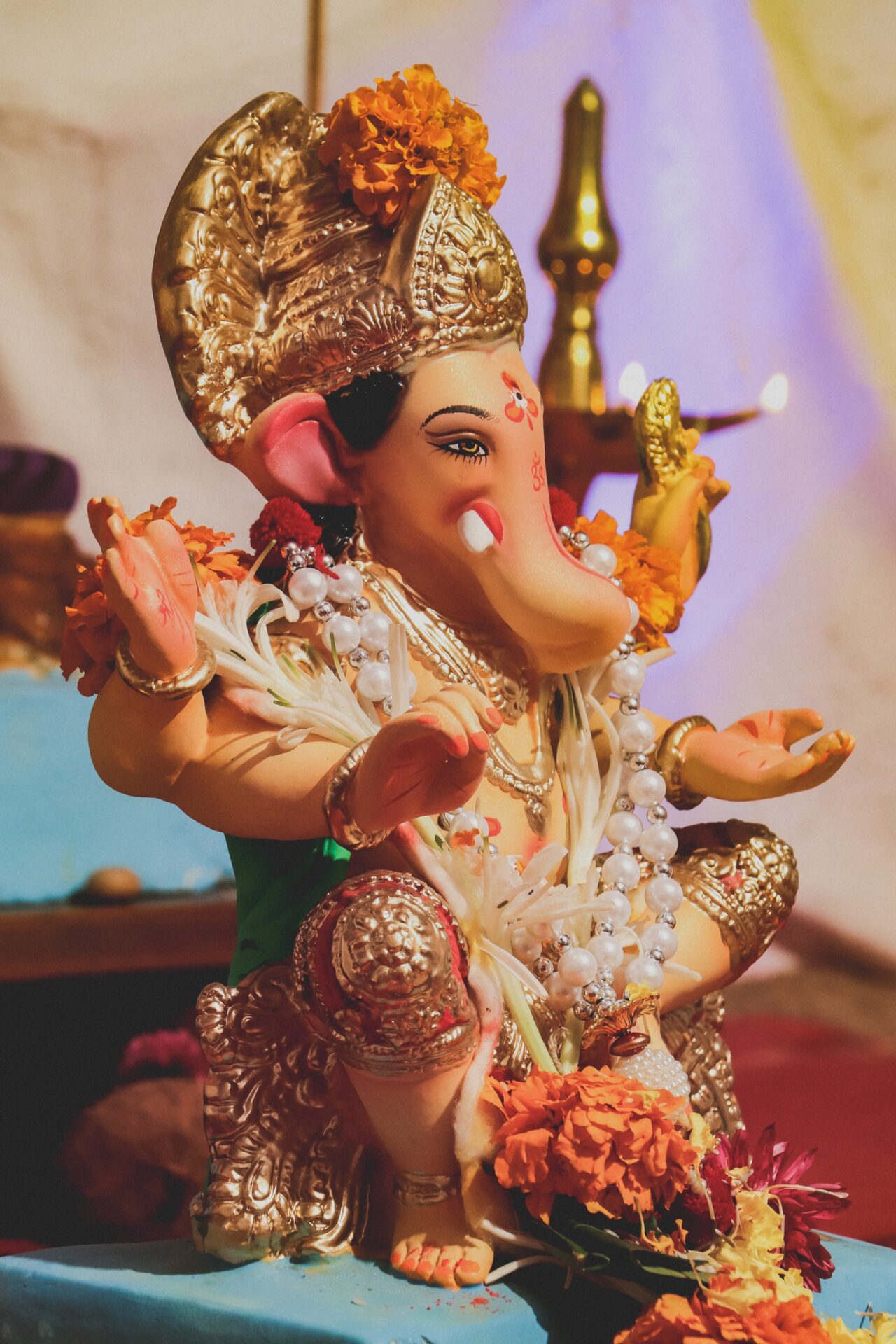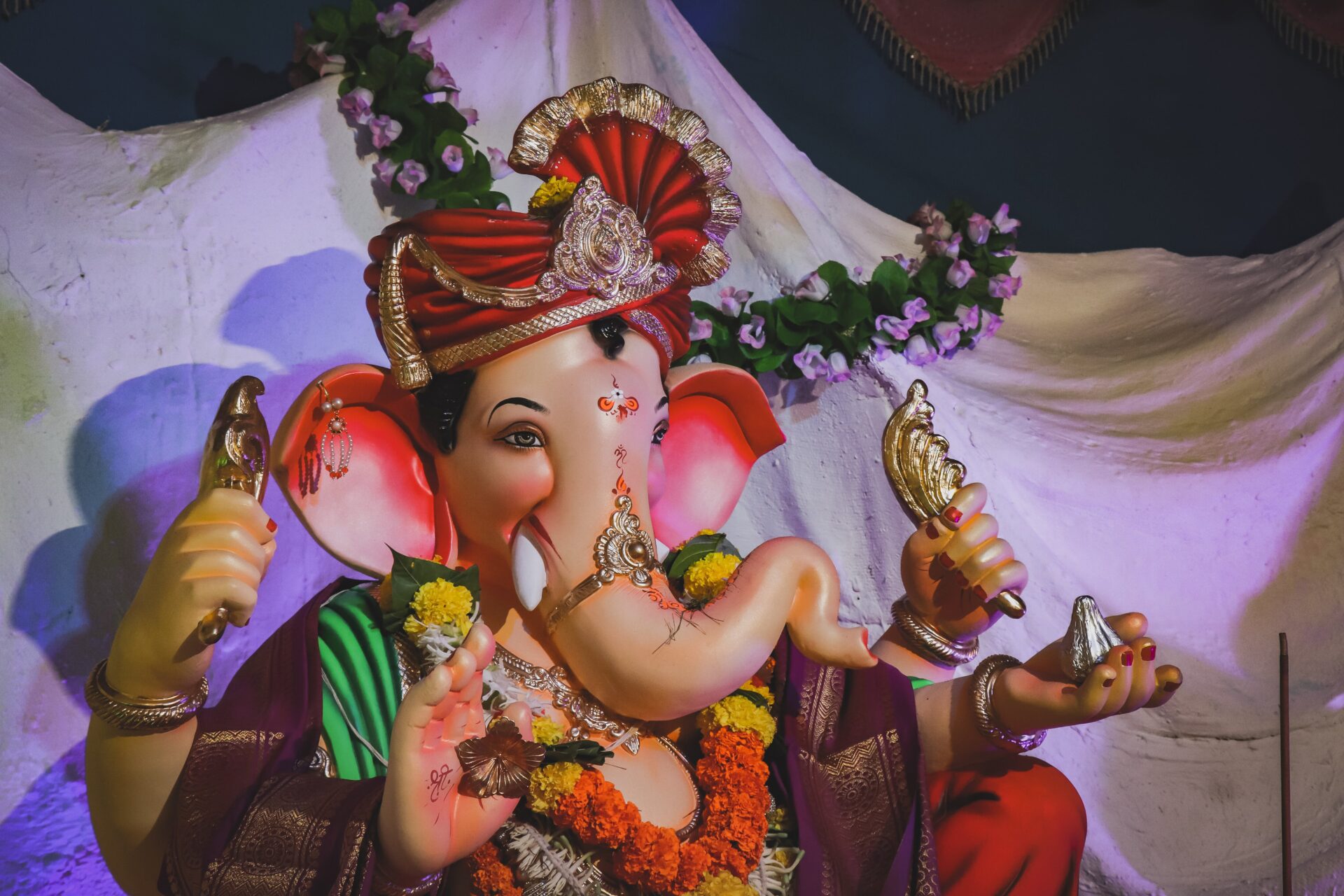Saraswati Puja, a vibrant and joyous festival, is celebrated with great fervor by Hindus all over the world. This auspicious occasion revolves around honoring and seeking blessings from the Hindu goddess of knowledge, wisdom, and arts, Saraswati. Discover the mesmerizing rituals, colorful decorations, and traditional customs that make Saraswati Puja an enchanting and auspicious affair for devotees. From adorning the goddess with flowers and offering various delicacies to seeking her blessings for educational pursuits, this article unravels the captivating celebration of Saraswati Puja and its significance in Hindu culture.

Table of Contents
Preparation for Saraswati Puja
Cleaning and decorating
Before Saraswati Puja, it is customary to thoroughly clean the house and the puja area. Dusting, mopping, and arranging everything neatly creates a fresh and welcoming environment for the goddess. Additionally, decorations play a significant role in creating a festive atmosphere. Floral garlands hang from ceilings, colorful rangolis adorn the floors, and diyas (oil lamps) are lit to illuminate the surroundings.
Gathering necessary materials
To perform the puja, certain materials are essential. These include a picture or idol of Goddess Saraswati, flowers, incense sticks, aarti lamp, turmeric powder, vermilion powder, sandalwood paste, fruits, sweets, and snacks. It is important to gather these items beforehand to ensure a smooth and uninterrupted worship experience.
Setting up the puja area
Setting up a dedicated puja area is crucial for Saraswati Puja. It can be a small altar or a separate room in the house. Clean white cloth is spread on the table or platform to symbolize purity. The picture or idol of Saraswati is placed on a decorated backdrop or peacock feathers, representing her vehicle. The other puja materials, including flowers, incense sticks, and lamps, are kept nearby for easy access during the rituals.
Traditional Dress Code
Sari for women
For women, wearing a sari during Saraswati Puja is considered traditional and auspicious. A sari is a beautiful and elegant Indian attire that symbolizes grace and femininity. Women can choose vibrant colors and intricate designs to add to the festive spirit of the occasion. The sari is usually paired with traditional jewelry, such as bangles, necklaces, and earrings, completing the traditional look.
Kurta-pajama for men
Men, on the other hand, commonly wear a kurta-pajama, which is a loose-fitting long shirt paired with comfortable pants. This attire is not only traditional but also allows for ease of movement during the puja rituals and festivities. Men can opt for vibrant or subtle colors, depending on personal preference. They can also accessorize with a traditional stole or a turban to enhance the overall look.
Offerings to Goddess Saraswati
Flowers and garlands
Offering flowers and garlands to Goddess Saraswati is an integral part of the puja ceremony. Fresh flowers, preferably lotus flowers, are revered as symbols of purity and divinity. These flowers are used to adorn the idol or picture of the goddess and are also showered over the devotees as a blessing from Saraswati. Some people also decorate the puja area with flower petals and create intricate designs called rangolis.
Fruits
Fruits play a significant role in Saraswati Puja as they symbolize abundance and prosperity. Devotees offer a variety of seasonal fruits to the goddess, ranging from bananas and apples to oranges and grapes. These fruits are believed to carry the blessings of Saraswati, and after the puja, they are consumed as prasad (blessed food) by the devotees.
Sweets and snacks
No celebration in India is complete without sweets and snacks, and Saraswati Puja is no exception. Devotees prepare a wide array of delectable sweets, such as ladoos, pedas, and kheer, to offer to the goddess. These sweet offerings represent happiness and joy. In addition to sweets, savory snacks like samosas, pakoras, and chivda are also made and shared among family and friends.
The Ritual Worship
Invoking the presence of Saraswati
The puja begins with the priest or the head of the household invoking the presence of Goddess Saraswati through prayers and mantras. This is done to invite the goddess into the puja area and seek her blessings. The devotees gather around the puja table, close their eyes, and focus their thoughts on Saraswati, seeking her divine guidance and wisdom.
Recitation of mantras
The recitation of sacred mantras dedicated to Goddess Saraswati is an essential part of the puja. These mantras, such as the Saraswati Vandana or the Gayatri Mantra, are believed to invoke the power and blessings of the goddess. The devotees, led by the priest or an experienced person, chant these mantras together, creating a harmonious and sacred atmosphere.
Performing aarti
Aarti is a devotional ritual performed with aarti lamps, where the devotees circulate the flames in a circular motion while singing hymns in praise of the deity. During Saraswati Puja, aarti is performed with utmost devotion to express reverence and gratitude towards Goddess Saraswati. As the flames dance and the melodious chants fill the air, devotees immerse themselves in the divine energy of the goddess.

Music and Dance Performances
Singing devotional songs
Music is an integral part of Saraswati Puja celebrations. Devotees, especially children, sing hymns and devotional songs in praise of Goddess Saraswati. These songs are filled with love, admiration, and gratitude towards the goddess for her blessings of knowledge and wisdom. The melodious tunes and heartfelt lyrics create an enchanting ambiance that uplifts everyone’s spirits.
Playing musical instruments
Apart from singing, playing musical instruments is also encouraged during Saraswati Puja. The harmonious sounds of instruments such as sitar, tabla, flute, and veena resonate through the air, adding an enchanting touch to the festivities. Talented musicians showcase their skills and pay homage to Saraswati, the goddess of arts and music, through their soulful renditions.
Traditional dance performances
Dance holds a significant place in Indian culture, and Saraswati Puja provides an excellent opportunity to showcase various traditional dance forms. Devotees, particularly students, perform dances like Bharatanatyam, Kathak, Odissi, and Manipuri, among others, to seek the blessings of Goddess Saraswati. These captivating performances not only entertain but also express devotion and reverence towards the goddess.
Prasad Distribution
Distributing blessed food
Prasad distribution is an essential aspect of any puja ceremony, including Saraswati Puja. After the completion of the rituals, the blessed food, which includes fruits, sweets, and snacks, is distributed among the devotees. It is believed that consuming prasad brings blessings, prosperity, and good fortune. The distribution is done with love and care, ensuring that everyone receives a share of the divine offerings.
Sharing prasad with family and friends
In addition to distributing prasad to the devotees present during the puja, it is customary to share the blessed food with family, friends, and neighbors. The prasad is packed in small containers and lovingly offered to those unable to attend the puja. This act of sharing demonstrates the spirit of unity, compassion, and togetherness that Saraswati Puja encompasses.
Feasting together
After the puja ceremony and prasad distribution, devotees gather together to enjoy a sumptuous feast. This feast includes a variety of traditional delicacies and savory dishes. Families and friends come together, sit, and bond over food, strengthening their relationships. The feast not only satiates the physical hunger but also nourishes the bonds of love and togetherness.

Education and Learning
Seeking blessings for knowledge
Saraswati Puja is particularly significant for students and individuals seeking knowledge and wisdom. Students place their books, notebooks, and other educational materials in front of the idol or picture of Saraswati, seeking the goddess’s blessings for academic success. They pray for clarity of mind, improved focus, and the ability to comprehend and retain knowledge effectively.
Offering prayers for academic success
Parents, along with their children, offer prayers and perform rituals to invoke Saraswati’s blessings for their academic pursuits. They deeply desire their children to excel in their studies and achieve intellectual growth. By offering prayers, parents express their hopes and aspirations for their children’s educational achievements and overall development.
Performing special rituals for children
Saraswati Puja provides an occasion to celebrate the learning journey of children and foster their interest in education. Special rituals like the “Aksharabhyasa” or “Vidyaarambham” are performed, where children are initiated into the world of letters and writing. Children trace their fingers on rice or sand, symbolizing the beginning of their formal education, under the guidance of their elders.
Cultural Activities and Competitions
Art exhibitions
Saraswati Puja celebrations often include art exhibitions where students and artists showcase their creative talents. Paintings, sketches, and sculptures depicting various aspects of Indian culture, mythology, and nature adorn the exhibition halls. The vibrant colors and imaginative designs captivate the visitors and showcase the artistic prowess of the participants.
Poetry recitations
In line with Saraswati’s association with language and literature, poetry recitations play a significant role in the festivities. Students and budding poets gather to recite their compositions or works of famous poets, reflecting on the importance of knowledge and wisdom. The recitations inspire and invoke the love for poetry, literature, and self-expression.
Essay writing competitions
Saraswati Puja is also a platform for intellectual enrichment through essay writing competitions. Participants, both young and old, are encouraged to express their thoughts and insights on various topics like education, culture, or societal issues. These competitions foster critical thinking, research skills, and articulation among the participants.
Community Celebrations
Organizing collective pujas
While many families perform Saraswati Puja privately in their homes, community pujas are also organized on a larger scale. These collective pujas bring together neighbors, friends, and people from the locality to worship and honor Goddess Saraswati collectively. Community pujas foster a sense of belonging, unity, and shared cultural heritage.
Community feasts and gatherings
In addition to collective pujas, community feasts and gatherings are organized as part of Saraswati Puja celebrations. These events provide an opportunity for people to come together, socialize, and enjoy the festive spirit. Everyone contributes to the feast, bringing traditional dishes and delicacies to share with each other. These gatherings strengthen community bonds and promote unity and harmony.
Cultural programs and performances
Community celebrations of Saraswati Puja often include cultural programs and performances to showcase the rich heritage of music, dance, and drama. Artists from the community and professional performers stage captivating performances, engaging the audience with their talent and skills. These cultural programs enrich the festivities and reinforce the significance of artistic expression and cultural preservation.
Conclusion and Significance
Saraswati Puja as a symbol of learning
Saraswati Puja holds immense significance as a celebration of knowledge, wisdom, and learning. It serves as a reminder of the importance of education, both academic and spiritual, in an individual’s life. By honoring Goddess Saraswati, people seek her blessings for intellectual growth, creative expression, and understanding.
Promotion of arts and culture
Saraswati Puja provides a platform for promoting arts, culture, and creativity. Through music, dance, art exhibitions, and poetry recitations, people express their love for the arts and showcase their talents. It fosters the growth of artistic skills, appreciation for cultural diversity, and encourages the preservation of traditional art forms.
Worshipping the goddess for wisdom and prosperity
Ultimately, Saraswati Puja is a time to express gratitude to Goddess Saraswati for her blessings in the form of wisdom, knowledge, and prosperity. Devotees seek divine guidance, inner clarity, and the ability to overcome obstacles in their pursuit of learning and personal growth. The puja ceremonies, rituals, and cultural activities associated with Saraswati Puja create an atmosphere of devotion, joy, and blessings.